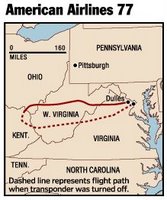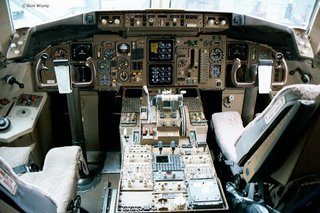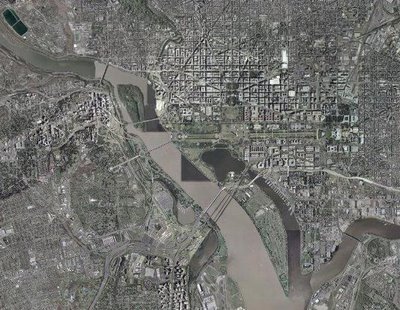***TOP SECRET - SPECIAL HANDLING***
THE JOINT CHIEFS OF STAFF
WASHINGTON 25, D.C.
13 March 1962
MEMORANDUM FOR THE SECRETARY OF DEFENSE
Subject: Justification for US Military Intervention in Cuba (TS)
1. The Joint Chiefs of Staff have considered the attached Memorandum for the Chief of Operations, Cuba Project, which responds to a request of that office for brief but precise description of pretexts which would provide justification for US military intervention in Cuba.
2. The Joint Chiefs of Staff recommend that the proposed memorandum be forwarded as a preliminary submission suitable for planning purposes. It is assumed that there will be similar submissions from other agencies and that these inputs will be used as a basis for developing a time-phased plan. Individual projects can then be considered on a case-by-case basis.
3. Further, it is assumed that a single agency will be given the primary responsibility for developing military and para-military aspects of the basic plan. It is recommended that this responsibility for both overt and covert military operations be assigned the Joint Chiefs of Staff.
For the Joint Chiefs of Staff:
L. L. LEMNITZER
Chairman
Joint Chiefs of Staff
1 EnclosureChairman
Joint Chiefs of Staff
memo for Chief of Operations, Cuba Project
NOTE BY THE SECRETARIES
to the
JOINT CHIEFS OF STAFF
on
NORTHWOODS (S)
A report* on the above subject is submitted for consideration by the Joint Chiefs of Staff.F. J. BLOUIN
M. J. INGELIDO
Joint Secretariat
____________________M. J. INGELIDO
Joint Secretariat
* Not reproduced herewith; on file in Joint Secretariat
JOINT CHIEFS OF STAFF
DECISION ON JCS 1969/321
A Note by the Secretaries
on
NORTHWOODS (S)
Note by the Secretaries
1. At their meeting on 13 March 1962, the Joint Chiefs of Staff approved the recommendations in paragraph 8 of JCS 1969/321.2. In that the Commandant had expressed direct concern of the Marine Corps in this matter, the provisions of Title 10, US Code 141 (6), applied and were followed.
3. This decision now becomes a part of and shall be attached as the top sheet of JCS 1969/321.
F. J. BLOUIN
M. J. INGELIDO
Joint Secretariat
M. J. INGELIDO
Joint Secretariat
9 March 1962
REPORT BY THE DEPARTMENT OF DEFENSE AND
JOINT CHIEFS OF STAFF REPRESENTATIVE ON THE
CARIBBEAN SURVEY GROUP
JOINT CHIEFS OF STAFF REPRESENTATIVE ON THE
CARIBBEAN SURVEY GROUP
to the
JOINT CHIEFS OF STAFF
on
CUBA PROJECT (TS)
The Chief of Operations, Cuba Project, has requested that he be furnished the views of the Joint Chiefs of Staff on this matter by 13 March 1962.JUSTIFICATION FOR US MILITARY INTERVENTION IN CUBA (TS)
THE PROBLEM
1. As requested* by Chief of Operations, Cuba Project, the Joint Chiefs of Staff are to indicate brief but precise description of pretexts which they consider would provide justification for US military intervention in Cuba.FACTS BEARING ON THE PROBLEM
2. It is recognized that any action which becomes pretext for US military intervention in Cuba will lead to a political decision which then would lead to military action.3. Cognizance has been taken of a suggested course of action proposed** by the US Navy relating to generated instances in the Guantanamo area.
4. For additional facts see Enclosure B.
DISCUSSION
5. The suggested courses of action appended to Enclosure A are based on the premise that US military intervention will result from a period of heightened US-Cuban tensions which place the United States in the position of suffering justifiable grievances. World opinion, and the United Nations forum should be favorably affected by developing the international image of the Cuban government as rash and irresponsible, and as an alarming and unpredictable threat to the peace of the Western Hemisphere.6. While the foregoing premise can be utilized at the present time it will continue to hold good only as long as there can be reasonable certainty that US military intervention in Cuba would not directly involve the Soviet Union. There is as yet no bilateral mutual support agreement binding the USSR to the defense of Cuba, Cuba has not yet become a member of the Warsaw Pact, nor have the Soviets established Soviet bases in Cuba in the pattern of US bases in Western Europe. Therefore, since time appears to be an important factor in resolution of the Cuba problem, all projects are suggested within the time frame of the next few months.
___________
* Memorandum for General Craig from Chief of Operations, Cuba Project, subject: "Operation MONGOOSE", dated 5 March 1962, on file in General Craig's office.
** Memorandum for the Chairman, Joint Chiefs of Staff, from Chief of Naval Operations, subject: "Instances to Provoke Military Actions in Cuba (TS)", dated 8 March 1962, on file in General Craig's office.
___________
CONCLUSION
RECOMMENDATIONS
8. It is recommended that:a. Enclosure A together with its attachments should be forwarded to the Secretary of Defense for approval and transmittal to the Chief of Operations, Cuba Project.
b. This paper NOT be forwarded to commanders of unified or specified commands.
c. This paper NOT be forwarded to US officers assigned to NATO activities.
d. This paper NOT be forwarded to the Chairman, US Delegation, United Nations Military Staff Committee.
MEMORANDUM FOR THE SECRETARY OF DEFENSE
Subject: Justification for US Military Intervention in Cuba (TS)
2. The Joint Chiefs of Staff recommend that the proposed memorandum be forwarded as a preliminary submission suitable for planning purposes. It is assumed that there will be similar submissions from other agencies and that these inputs will be used as a basis for developing a time-phased plan. Individual projects can then be considered on a case-by-ease basis.
3. Further, it is assumed that a single agency will be given the primary responsibility for developing military and para-military aspects of the basic plan. It is recommended that this responsibility for both overt and covert military operations be assigned the Joint Chiefs of Staff.
___________
* Memorandum for Gen Craig from Chief of Operations, Cuba Project, subject: "Operation MONGOOSE", dated 5 March 1962, on file in Gen Craig's office.
___________
APPENDIX TO ENCLOSURE A
DRAFT
MEMORANDUM FOR CHIEF OF OPERATIONS, CUBA PROJECT
Subject: Justification for US Military Intervention in Cuba (TS)
2. The projects listed in the enclosure hereto are forwarded as a preliminary submission suitable for planning purposes. It is assumed that there will be similar submissions from other agencies and that these inputs will be used as a basis for developing a time-phased plan. The individual projects can then be considered on a case-by-case basis.
3. This plan, incorporating projects selected from the attached suggestions, or from other sources, should be developed to focus all efforts on a specific ultimate objective which would provide adequate justification for US military intervention. Such a plan would enable a logical build-up of incidents to be combined with other seemingly unrelated events to camouflage the ultimate objective and create the necessary impression of Cuban rashness and irresponsibility on a large scale, directed at other countries as well as the United States. The plan would also properly integrate and time phase the courses of action to be pursued. The desired resultant from the execution of this plan would be to place the United States in the apparent position of suffering defensible grievances from a rash and irresponsible government of Cuba and to develop an international image of a Cuban threat to peace in the Western Hemisphere.
4. Time is an important factor in resolution of the Cuban problem. Therefore, the plan should be so time-phased that projects would be operable within the next few months.
5. Inasmuch as the ultimate objective is overt military intervention, it is recommended that primary responsibility for developing military and para-military aspects of the plan for both overt and covert military operations be assigned the Joint Chiefs of Staff.
ANNEX TO APPENDIX TO ENCLOSURE A
PRETEXTS TO JUSTIFY US MILITARY INTERVENTION IN CUBA
(Note: The courses of action which follow are a preliminary submission suitable only for planning purposes. They are arranged neither chronologically nor in ascending order. Together with similar inputs from other agencies, they are intended to provide a point of departure for the development of a single, integrated, time-phased plan. Such a plan would permit the evaluation of individual projects within the context of cumulative, correlated actions designed to lead inexorably to the objective of adequate justification for US military intervention in Cuba).1. Since it would seem desirable to use legitimate provocation as the basis for US military intervention in Cuba a cover and deception plan, to include requisite preliminary actions such as has been developed in response to Task 33 c, could be executed as an initial effort to provoke Cuban reactions. Harassment plus deceptive actions to convince the Cubans of imminent invasion would be emphasized. Our military posture throughout execution of the plan will allow a rapid change from exercise to intervention if Cuban response justifies.
2. A series of well coordinated incidents will be planned to take place in and around Guantanamo to give genuine appearance of being done by hostile Cuban forces.
a. Incidents to establish a credible attack (not in chronological order):
(1) Start rumors (many). Use clandestine radio.
(2) Land friendly Cubans in uniform "over-the-fence" to stage attack on base.
(3) Capture Cuban (friendly) saboteurs inside the base.
(4) Start riots near the base main gate (friendly Cubans).
(5) Blow up ammunition inside the base; start fires.
(6) Burn aircraft on air base (sabotage).
(7) Lob mortar shells from outside of base into base. Some damage to installations.
(8) Capture assault teams approaching from the sea or vicinity of Guantanamo City.
(9) Capture militia group which storms the base.
(10) Sabotage ship in harbor; large fires -- naphthalene.
(11) Sink ship near harbor entrance. Conduct funerals for mock-victims (may be lieu of (10)).
b. United States would respond by executing offensive operations to secure water and power supplies, destroying artillery and mortar emplacements which threaten the base.
c. Commence large scale United States military operations.
3. A "Remember the Maine" incident could be arranged in several forms:
a. We could blow up a US ship in Guantanamo Bay and blame Cuba.
b. We could blow up a drone (unmanned) vessel anywhere in the Cuban waters. We could arrange to cause such incident in the vicinity of Havana or Santiago as a spectacular result of Cuban attack from the air or sea, or both. The presence of Cuban planes or ships merely investigating the intent of the vessel could be fairly compelling evidence that the ship was taken under attack. The nearness to Havana or Santiago would add credibility especially to those people that might have heard the blast or have seen the fire. The US could follow up with an air/sea rescue operation covered by US fighters to "evacuate" remaining members of the non-existent crew. Casualty lists in US newspapers would cause a helpful wave of national indignation.
4. We could develop a Communist Cuban terror campaign in the Miami area, in other Florida cities and even in Washington. The terror campaign could be pointed at refugees seeking haven in the United States. We could sink a boatload of Cubans enroute to Florida (real or simulated). We could foster attempts on lives of Cuban refugees in the United States even to the extent of wounding in instances to be widely publicized. Exploding a few plastic bombs in carefully chosen spots, the arrest of Cuban agents and the release of prepared documents substantiating Cuban involvement, also would be helpful in projecting the idea of an irresponsible government.
5. A "Cuban-based, Castro-supported" filibuster could be simulated against a neighboring Caribbean nation (in the vein of the 14th of June invasion of the Dominican Republic). We know that Castro is backing subversive efforts clandestinely against Haiti, Dominican Republic, Guatemala, and Nicaragua at present and possible others. These efforts can be magnified and additional ones contrived for exposure. For example, advantage can be taken of the sensitivity of the Dominican Air Force to intrusions within their national air space. "Cuban" B-26 or C-46 type aircraft could make cane-burning raids at night. Soviet Bloc incendiaries could be found. This could be coupled with "Cuban" messages to the Communist underground in the Dominican Republic and "Cuban" shipments of arm which would be found, or intercepted, on the beach.
6. Use of MIG type aircraft by US pilots could provide additional provocation. Harassment of civil air, attacks on surface shipping and destruction of US military drone aircraft by MIG type planes would be useful as complementary actions. An F-86 properly painted would convince air passengers that they saw a Cuban MIG, especially if the pilot of the transport were to announce such fact. The primary drawback to this suggestion appears to be the security risk inherent in obtaining or modifying an aircraft. However, reasonable copies of the MIG could be produced from US resources in about three months.
7. Hijacking attempts against civil air and surface craft should appear to continue as harassing measures condoned by the government of Cuba. Concurrently, genuine defections of Cuban civil and military air and surface craft should be encouraged.
8. It is possible to create an incident which will demonstrate convincingly that a Cuban aircraft has attacked and shot down a chartered civil airliner enroute from the United States to Jamaica, Guatemala, Panama or Venezuela. The destination would be chosen only to cause the flight plan route to cross Cuba. The passengers could be a group of college students off on a holiday or any grouping of persons with a common interest to support chartering a non-scheduled flight.
a. An aircraft at Eglin AFB would be painted and numbered as an exact duplicate for a civil registered aircraft belonging to a CIA proprietary organization in the Miami area. At a designated time the duplicate would be substituted for the actual civil aircraft and would be loaded with the selected passengers, all boarded under carefully prepared aliases. The actual registered aircraft would be converted to a drone.
b. Take off times of the drone aircraft and the actual aircraft will be scheduled to allow a rendezvous south of Florida. From the rendezvous point the passenger-carrying aircraft will descend to minimum altitude and go directly into an auxiliary field at Eglin AFB where arrangements will have been made to evacuate the passengers and return the aircraft to its original status. The drone aircraft meanwhile will continue to fly the filed flight plan. When over Cuba the drone will being transmitting on the international distress frequency a "MAY DAY" message stating he is under attack by Cuban MIG aircraft. The transmission will be interrupted by destruction of the aircraft which will be triggered by radio signal. This will allow ICAO radio stations in the Western Hemisphere to tell the US what has happened to the aircraft instead of the US trying to "sell" the incident.
9. It Is possible to create an incident which will make it appear that Communist Cuban MIGs have destroyed a USAF aircraft over international waters in an unprovoked attack.
a. Approximately 4 or 5 F-101 aircraft will be dispatched in trail from Homestead AFB, Florida, to the vicinity of Cuba. Their mission will be to reverse course and simulate fakir aircraft for an air defense exercise in southern Florida. These aircraft would conduct variations of these flights at frequent Intervals. Crews would be briefed to remain at least 12 miles off the Cuban coast; however, they would be required to carry live ammunition in the event that hostile actions were taken by the Cuban MIGs.
b. On one such flight, a pre-briefed pilot would fly tail-end Charley at considerable interval between aircraft. While near the Cuban Island this pilot would broadcast that he had been jumped by MIGs and was going down. No other calls would be made. The pilot would then fly directly west at extremely low altitude and land at a secure base, an Eglin auxiliary. The aircraft would be met by the proper people, quickly stored and given a new tail number. The pilot who had performed the mission under an alias, would resume his proper identity and return to his normal place of business. The pilot and aircraft would then have disappeared.
c. At precisely the same time that the aircraft was presumably shot down a submarine or small surface craft would disburse F-101 parts, parachute, etc., at approximately 15 to 20 miles off the Cuban coast and depart. The pilots returning to Homestead would have a true story as far as they knew. Search ships and aircraft could be dispatched and parts of aircraft found.
ENCLOSURE B
FACTS BEARING ON THE PROBLEM
1. The Joint Chiefs of Staff have previously stated* that US unilateral military intervention in Cuba can be undertaken in the event that the Cuban regime commits hostile acts against US forces or property which would serve as an incident upon which to base overt intervention.2. The need for positive action in the event that current covert efforts to foster an Internal Cuban rebellion are unsuccessful was indicated** by the Joint Chiefs of Staff on 7 March 1962, as follows:
" - - - determination that a credible internal revolt is impossible of attainment during the next 9-10 months will require a decision by the United States to develop a Cuban "provocation" as justification for positive US military action."
3. It is understood that the Department of State also is preparing suggested courses of action to develop justification for US military intervention in Cuba.
Links:
- Pentagon Proposed Pretexts for Cuba Invasion in 1962 - National Security Archives
- Actual documents (PDF) - National Security Archives
- Transcript of Operation Northwoods - 'Tetrahedronomega'
- March 13, 1962 - Killtown's: 9/11 coincidences and oddities page!





